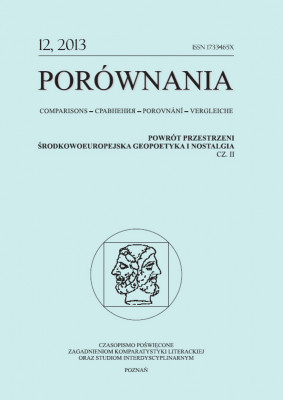Paratactic Poetics. On the Incongruency of Author and Work Intention in Kurt Schwitters’ Literary Oeuvre
Many works in the oeuvre of the avant- garde artist Kurt Schwitters have an enigmatic character. Not only his abstract visual art but also his poetry resists simple unambigious interpretation. They do not contain clear messages or unequivocal indications of Schwitters’ intentions. Here, Schwitters’ work is not a singular case, but rather a typical example of the art and literature of the historical avant-garde, to which Schwitters belonged. As in studies on the avant-garde in general, literature on Schwitters and his artistic and literary work tends to resort to his manifestoes and programmatic writing, which sided his works of art, collages, paintings, sculptures, poetry and other literary texts in a more narrow sense, as a source for clues on Schwitters’ intentions and the meaning he attributed to his work. But to what extent is this programmatic writing reliable, or to be more precise: to what extent do the aesthetic principles, artistic procedures and the poetics outlined in these texts correspond with the artistic and literary practice as it can be observed in Schwitters’ work? Focus- ing on Schwitters’ poetic oeuvre and his poetics formulated in manifestoes and other poetical texts, it is evident that Schwitters’ remarks on poetry were an integrated part of his aesthetic reflections on the visual arts and his explicit poetics in his programmatic writing rather a derivative of reflections on his artistic production – a not uncommon feature in avant-garde poetics, which frequently reflected and tried to translate aesthetic principles coined in the context of the visual arts to (and one might argue: Schwitters was in first instance a visual artist). Even be- tween Schwitters’ programmatic texts strictly concentrating on poetics and his poetry and prose apparently explained in these texts, an obvious discrepancy between theory and practice. A comparison with the reflections of the so-called ‚Russian formalists’ shows that their consider ations on poetry are to a large extent congenial to Schwitters’ approach, yet far more subtle and accurate in defining the poetic principles, which characterize Schwitters’ literary oeuvre – probably not accidental. Apart from the proximity of formalists to the avant-garde, both Schwitters and the formalists were inspired by the German literary historian and theoretician Oskar Walzel. Schwitters attended his classes during his study at the art academy in Dresden, the formalists read Walzel and translated his works. This may explain the striking congeniality between Schwitters and the formalists e.g. in their insistence on the ‚materiality’ of the word, but also in their attempts to combine reflections on word and image, which were a major subject in Walzel’s writing. Walzel as a trait d’union between Schwitters and the formalists may also be taken as incentive for a reading of Schwitters’ poetry as poetry with pecularities of its own, which were addressed by the formalists in a far more precise way – not just as an ahistorical reading exercise, but as Walzel as mutual source of inspiration shows, against a divergent, yet simultaneously shared theoretical horizon of avant-garde approaches of art and literature from West and East in practice and in theory.
| Article Title | Type | Size |
|---|---|---|
| van den Berg | [pdf] | [295 KB] |
